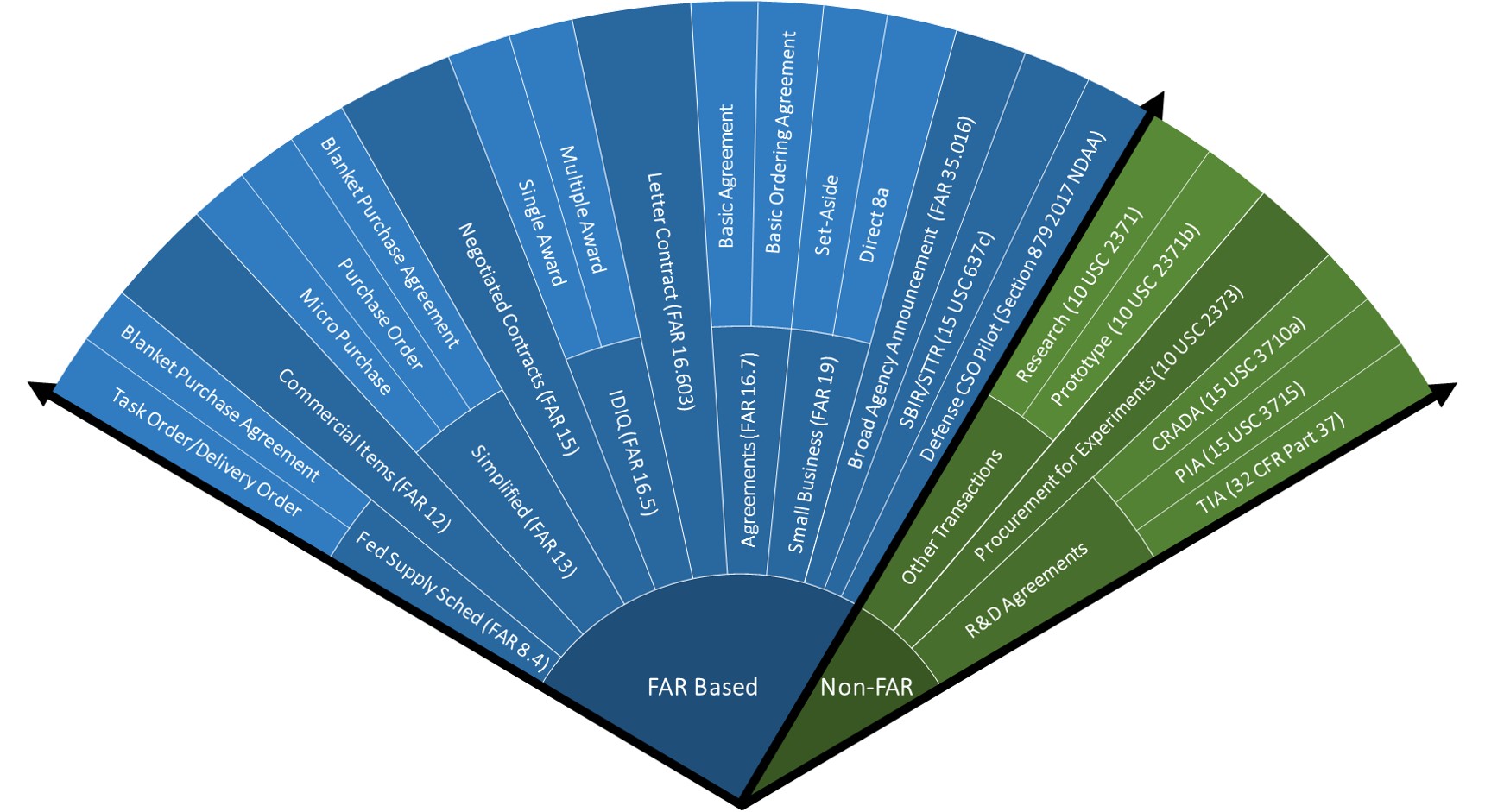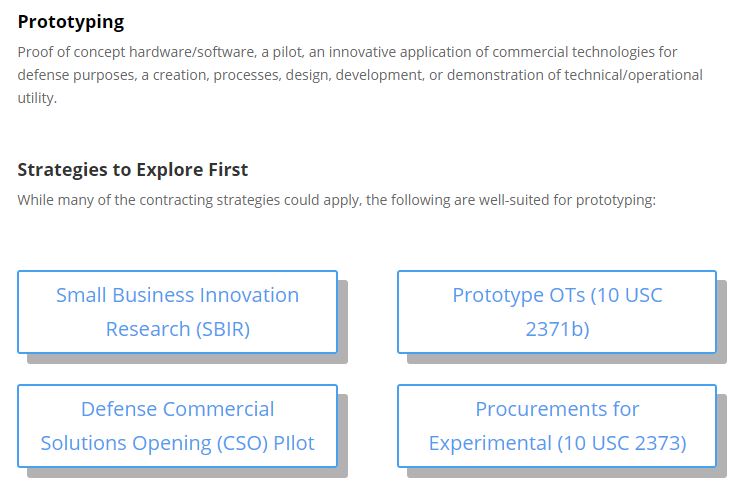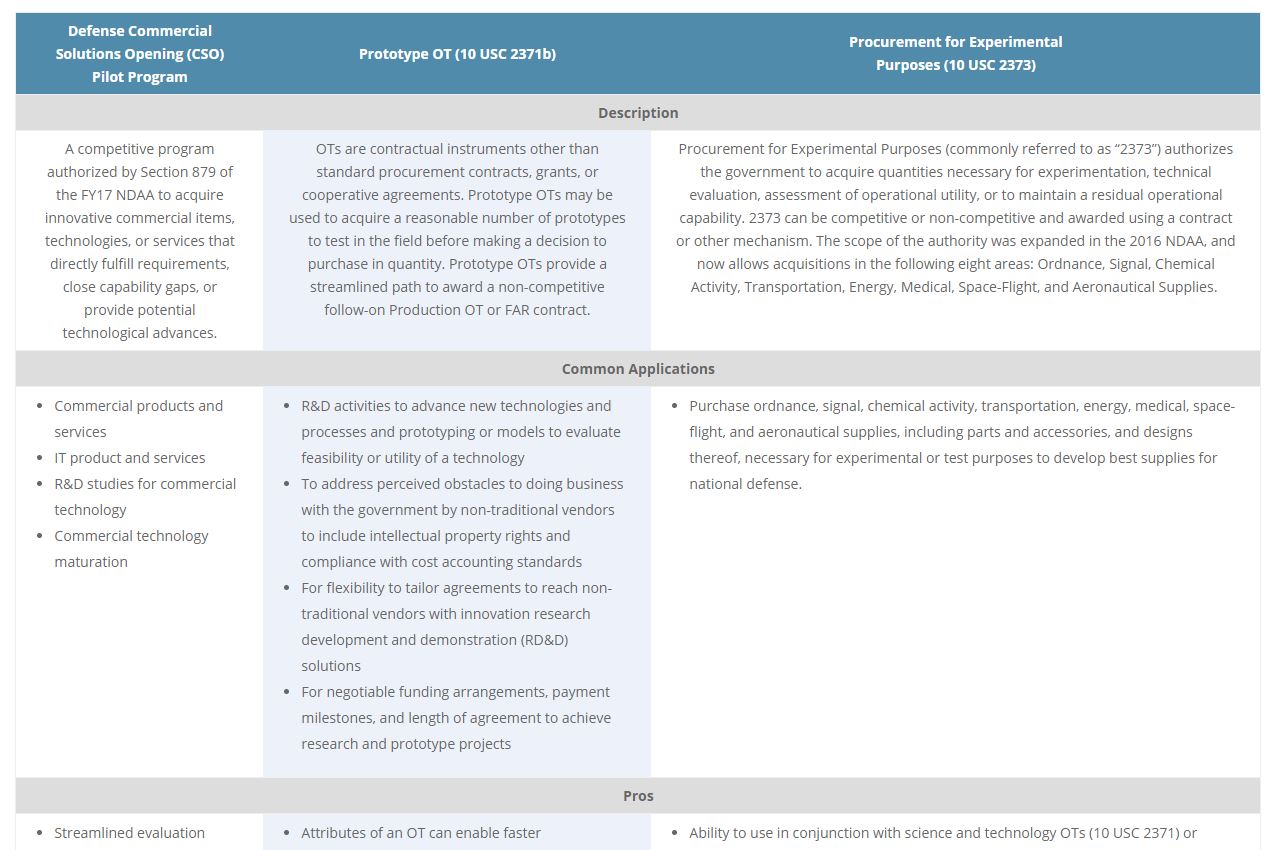Competing a new FAR Part 15 contract via a full and open competition can take 18-months or more. While the contract actions to develop and produce a billion dollar major weapon system that will last for decades requires sufficient time to do right (yet not 2.5 years), not everything DoD acquires falls into this category. Acquisition and contracting professionals must explore the full spectrum of FAR and Non-FAR contract strategies to apply the right strategy for their program conditions.
In December 2018, Ms. Lord, USD(A&S) published the Contracting Cone at https://aaf.dau.edu/contracting-cone/ as part of her broader goal to cut contracting timelines in half.
The Contracting Cone tool includes 18 different scenarios such as COTS, IT Services, A&AS Services, and SW Development. For each scenario, the cone outlines contract strategies to explore first. In the example below, if exploring contracting strategies for prototyping, the site outlines four potential strategies to explore first.
The Contracting Cone also has a compare feature that shows side-by-side the pros, cons, and common applications of similar strategies to help you select the best strategy for your situation. In the example below users can compare Defense CSO to Prototype OTs to 2373 Procurement for Experimental purposes to support their strategy development.
Actions You Can Take
- Contracting officers, program managers, and related stakeholders should visit the Contracting Cone and explore the full spectrum of FAR and Non-FAR contract strategies. Discuss the environment and priorities for your program (speed, competition, cost) and the pros and cons of potential strategies on the cone.
- If looking to Accelerate contracting timelines, explore strategies on the cone that can be executed faster. Some programs may find value in applying multiple contract strategies (e.g. a BAA or OTA for initial prototypes or design, than a more traditional FAR contract for more complex development and production).
- Leaders of contracting organizations could examine the most common types of capabilities they acquire today and the current contract strategies on the cone they use. They can also discuss and identify the range of contract strategies that could be used for each common type of capabilities. This may drive some strategic planning to put some new contract vehicles in place, provide training to your contracting workforce on alternate contract strategies, and encourage experimenting with new strategies based on needs.




0 Comments